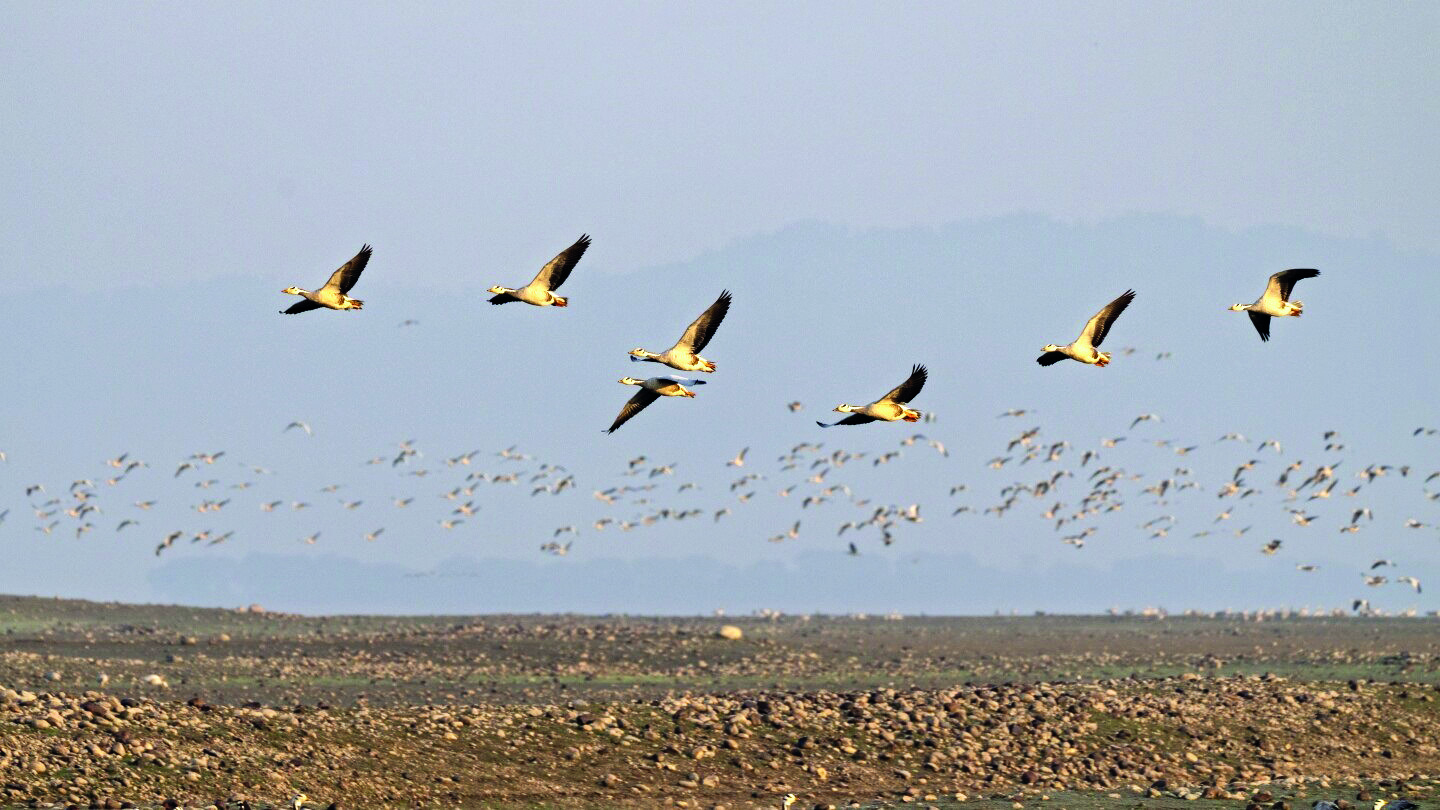Most welcome: Feathered guests descend on Himachal’s Pong Dam lake in record number, pique interest

Shimla: Pong Dam lake, also known as Maharana Pratap Sagar, a prominent wetland in Himachal Pradesh, is home to various migratory birds.
These birds, coming to the lake from far-off destinations like trans-Himalayas, Tibet, Siberia, Central Asia and Russia, arrive here during the winter months, whipping up excitement among locals and bird enthusiasts alike.
The wildlife enthusiasts and scientists are particularly excited over a record number of migratory birds arriving at the lake, making it as their highly favourable site of ecological significance and tourist attraction — now also being promoted by the state government.
As per bird count recently completed by the state’s wildlife department in collaboration with the Bombay Natural History Society, Wildlife Institute of India and local bird enthusiasts, the total number of birds recorded were 1,53,719 of 97 species, including 1,44,371 migratory birds of 55 species, 7,382 resident birds of 31 species, and 1,966 birds of 11 other species
More than 100 personnel were deployed to complete the annual bird census at the lake, said senior forest officials, who shared the data.
The birds largely included ducks, geese and cranes.
Purshotam Kumar, a local resident, explained that the surge in migratory birds at Pong Dam can be attributed to the ongoing dry spell in the region.
The lack of rainfall has caused the water levels in the lake to drop significantly, resulting in the exposure of a large portion of the lakebed. This has created ideal feeding grounds for the birds, attracting numerous species that typically rely on such conditions for sustenance during their migration.
The exposed areas are rich in food sources, making the lake an even more appealing destination for migratory birds this year, he says.
“Due to the dry spell and lack of rainfall this winter, the lake’s water levels have dropped significantly, exposing more of its bed.
This has created a larger feeding ground for the birds, which are typically drawn to such areas for food and shelter during migration,” a wildlife official concurred.
The exposed lakebed thus had provided an abundant supply of aquatic vegetation, insects, and small invertebrates, boosting the availability of food resources.
This was the second time after 2004 the officials have recorded a remarkable rise in the number of migratory birds.
This year’s total bird population increased by 83,555 individuals compared to the previous year’s count of 1,17,022 birds from 198 species. The number of migratory birds in 2023 was 75,490 from 48 species, while resident water-dependent birds stood at 8,065 from 37 species.
This was contrary to the previous years when the Pong wetland had witnessed a decline in bird numbers due to delayed migration in the Central Asian Flyway, warmer winters and unpredictable weather changes. However, this year’s increase has brought joy to bird watchers and conservationists.
Pong Dam lake continues to serve as a critical wintering ground for thousands of birds. The migratory flocks will return to their native habitats in March with the onset of spring.
In January 2021, over 2,400 migratory birds had died due to outbreak H5N1 avian flu virus at Pong Lake.



